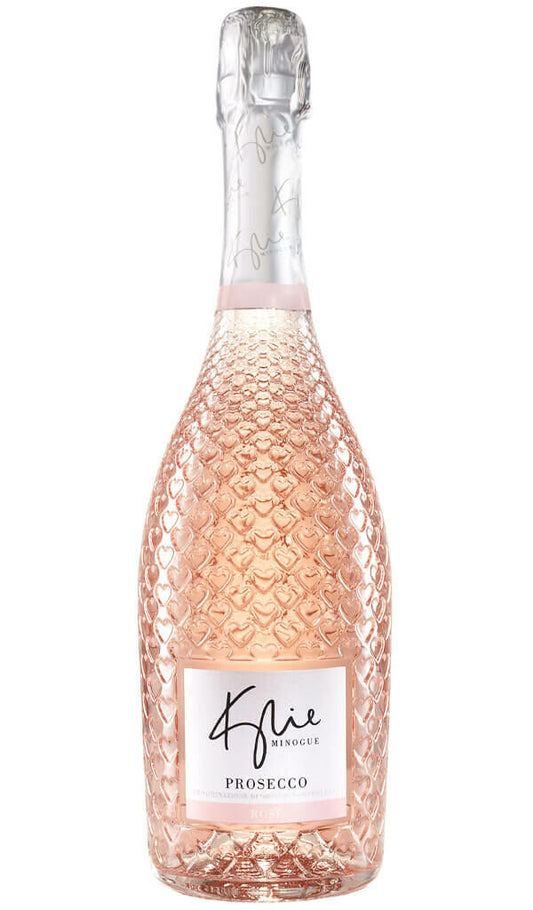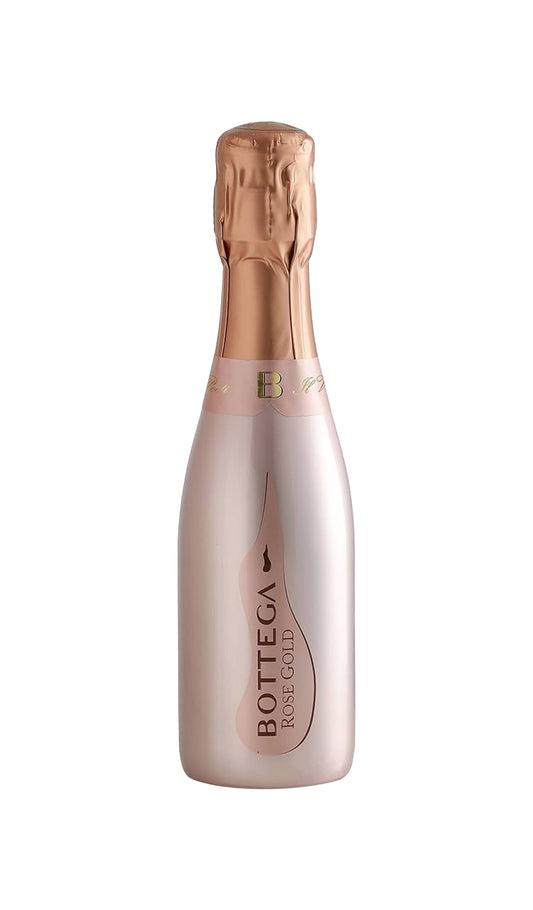Collection: Italian Rosé Wine | Still & Sparkling
Italian Rosé Wine Collection
Discover the elegance and diversity of Italian rosé wines, from the sun-drenched vineyards of Puglia to the sparkling hills of Veneto. Our collection showcases Italy's exceptional rosato tradition, featuring both still and sparkling expressions that capture the essence of la dolce vita, all at great value prices.
Italian Rosé Traditions
Italy's rosé heritage spans centuries, with each region bringing its own character and winemaking philosophy to this versatile style. Italian rosato wines range from pale, delicate aperitif styles to deeper-hued, food-friendly expressions, reflecting the country's diverse climates, grape varieties, and culinary traditions.
Key Italian Rosé Regions
Veneto – Home to Prosecco Rosé, the Veneto region in northeastern Italy has embraced the rosé revolution with characteristic Italian flair. The region's rolling hills, temperate climate, and mineral-rich soils create ideal conditions for sparkling wine production. Prosecco Rosé DOC, introduced in 2020, blends Glera grapes with a minimum 10% Pinot Noir, creating elegant, fruit-forward sparklers with delicate strawberry and floral notes.
The Veneto's climate is influenced by the nearby Adriatic Sea and the protective Alps to the north, creating warm days moderated by cool breezes. This diurnal temperature variation preserves the fresh acidity essential for vibrant sparkling wines whilst allowing grapes to develop aromatic complexity.
Puglia – Located in Italy's sun-soaked heel, Puglia is one of the country's most exciting regions for rosato production. The region's hot Mediterranean climate, abundant sunshine (over 300 days annually), and cooling Adriatic and Ionian sea breezes create perfect conditions for producing richly flavoured yet refreshing rosé wines.
Puglia's ancient limestone soils, known locally as terra rossa, impart distinctive mineral character and help regulate water stress during the hot, dry summers. The region's indigenous grape varieties—including Negroamaro, Primitivo, and Bombino Nero—produce rosatos with vibrant cherry and watermelon fruit, herbal complexity, and remarkable depth.
Puglian rosatos typically display a deeper colour and more structured palate than their northern counterparts, reflecting the region's warmer climate and traditional winemaking approach. These wines are crafted for food, particularly the region's seafood-rich cuisine.
Abruzzo (Terre di Chieti) – Nestled between the Apennine Mountains and the Adriatic coast, Abruzzo produces elegant rosatos that balance richness with refreshment. The Terre di Chieti IGT zone benefits from a unique mesoclimate where mountain air meets maritime influences, creating significant day-night temperature swings.
Abruzzo's rosatos are often crafted from Montepulciano grapes, the region's signature red variety. The resulting wines display bright cherry and raspberry fruit with subtle spice notes and crisp acidity. The region's clay and limestone soils contribute structure and minerality, whilst the moderate climate ensures balanced ripeness.
Italian Rosé Styles
Prosecco Rosé DOC – Italy's newest sparkling sensation, Prosecco Rosé combines the approachable charm of traditional Prosecco with the elegance of Pinot Noir. These wines display delicate pink hues, fine bubbles, and aromas of strawberry, white peach, and rose petals. The palate is fresh and fruity with a clean, dry finish—perfect for celebrations or as an aperitif.
Spumante Rosé (Sparkling Rosé) – Italian sparkling rosés beyond Prosecco showcase diverse regional expressions. These wines may be crafted using the Charmat method (tank fermentation) or traditional method (bottle fermentation), producing styles ranging from delicate and floral to rich and complex. Expect notes of red berries, citrus, and subtle yeast character.
Rosato IGT (Still Rosé) – Italian still rosés are typically vinified using the direct press method, where red grapes are gently pressed and the juice has brief contact with the skins, extracting colour and flavour. The result is wines with pale to medium pink hues, fresh acidity, and vibrant fruit character. These rosatos are designed for immediate enjoyment and pair beautifully with Mediterranean cuisine.
Grape Varieties
Italian rosés showcase both international and indigenous varieties:
- Pinot Noir – Used in Prosecco Rosé and premium spumante, contributing elegance, structure, and red berry character
- Glera – The Prosecco grape, providing floral aromatics and fresh fruit in sparkling rosés
- Montepulciano – Abruzzo's signature variety, producing rosatos with cherry fruit and herbal complexity
- Negroamaro – Puglian native offering deep colour, rich fruit, and Mediterranean herb notes
- Primitivo – Creates fruit-forward rosatos with ripe strawberry and spice character
- Bombino Nero – Indigenous Puglian variety producing delicate, aromatic rosatos
Winemaking Approach
Italian rosé production emphasises freshness and fruit purity. Most rosatos are vinified in temperature-controlled stainless steel tanks to preserve delicate aromatics and vibrant acidity. Minimal oak influence allows the fruit and terroir to shine, creating wines that are approachable, food-friendly, and expressive of their origin.
For sparkling rosés, the Charmat method (used for Prosecco Rosé) involves secondary fermentation in pressurised tanks, preserving fresh fruit character and creating fine, persistent bubbles. This method produces wines designed for immediate enjoyment whilst maintaining exceptional quality.
Climate Influences
Italy's diverse geography creates varied climates ideal for rosé production. Northern regions like Veneto benefit from Alpine protection and moderate continental conditions, whilst southern regions like Puglia enjoy hot Mediterranean climates tempered by sea breezes. This climatic diversity allows Italian rosés to range from delicate and mineral-driven to rich and sun-kissed.
The consistent sunshine across Italy's rosé-producing regions ensures reliable ripening and concentrated fruit flavours, whilst cooling maritime and mountain influences preserve the fresh acidity that makes these wines so refreshing.
Serving & Pairing
Italian rosés are best served chilled (8-10°C for still rosés, 6-8°C for sparkling). Prosecco Rosé is perfect for celebrations, aperitifs, or paired with light appetisers and seafood. Still rosatos complement Italian antipasti, grilled fish, tomato-based pasta dishes, and pizza. The wines' versatility makes them ideal for warm-weather dining and al fresco occasions.
Explore our Italian rosé collection and experience the diversity and elegance of Italy's rosato tradition at great value prices.
-
Kylie Minogue The Signature Prosecco Rosé (Italy)
Regular price $19.99Regular price$24.99Sale price $19.99Sale -
Bottega Rose Gold Brut Rose Piccolo 200mL (Italy)
Regular price $5.99Regular price$6.99Sale price $5.99Sale -
Pasqua Puglia Rosato Rosé 2024 IGT (Italy)
Regular price $13.99Regular price$14.99Sale price $13.99Sale -
Vigneti Radica Rosato IGT Terre di Chieti 2022 (Italy)
Regular price $27.99Regular price$29.99Sale price $27.99Sale
Latest wines...
-
Schild Estate Edel Small Batch Shiraz 2019 Barossa Valley
Regular price $87.99Regular price$89.99Sale price $87.99Sale -
Hoddles Creek Pinot Gris 2025 Yarra Valley
Regular price $23.99Regular price$24.99Sale price $23.99Sale -
Rock Angel Rosé Caves d'Esclans 2024 France
Regular price $64.99Regular price$69.99Sale price $64.99Sale -
Casali Del Barone Barbera Piemonte DOC 2024 Italy
Regular price $22.99Regular price$24.99Sale price $22.99Sale -
De Bortoli Deen Vat 9 Cabernet Sauvignon 2020
Regular price $10.99Regular price$11.99Sale price $10.99Sale -
St Hallett Blackwell Shiraz 2022 Barossa Valley
Regular price $39.99Regular price$49.99Sale price $39.99Sale -
La Perrière La Petite Perriere Pinot Noir 2024 France
Regular price $19.99Regular price$22.99Sale price $19.99Sale -
Xavier Goodridge Avon Pinot Noir 2024 Mafra Gippsland
Regular price $62.99Regular price$65.99Sale price $62.99Sale -
Mr. Mick Tempranillo 2023 by Tim Adams Clare Valley
Regular price $14.99Regular price$16.99Sale price $14.99Sale -
Ten Minutes By Tractor McCutcheon Pinot Noir 2022 Mornington
Regular price $93.99Regular price$94.99Sale price $93.99Sale -
Payten & Jones Hollow Bones Pinot Noir 2022 Yarra Valley
Regular price $48.99Regular price$49.99Sale price $48.99Sale -
Taylors Jaraman Shiraz 2024 Clare Valley & McLaren Vale
Regular price $24.99Regular price$29.99Sale price $24.99Sale
More
-

Premium Spirits - Whisky, Gin, Vodka, Rum & More
Shop Premium Spirits Online at Great Prices Discover Australia's finest selection of...
-

Craft Beer Collection | Local & Imported
Explore Our Craft Beer Collection Discover an exceptional range of craft beers...
-

Alcohol-Free Beverages Collection
Discover Premium Alcohol-Free BeveragesExplore our comprehensive selection of alcohol-free beverages, offering sophisticated...






















